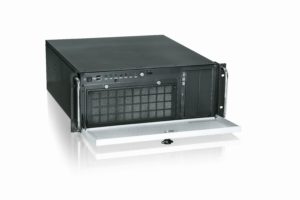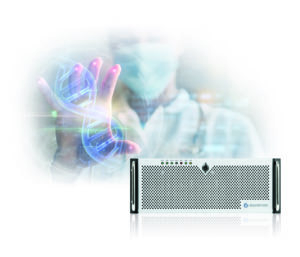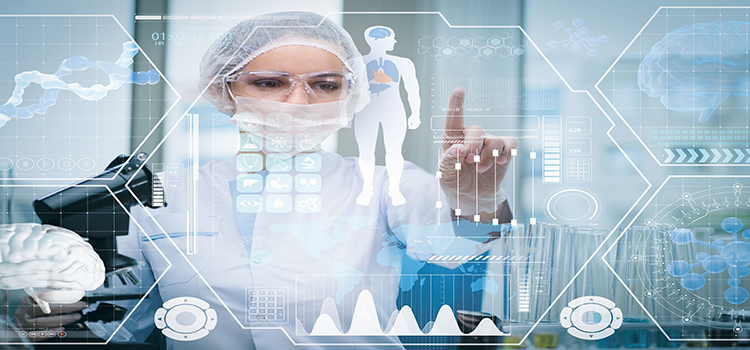Artificial intelligence opens up new opportunities for prevention, diagnostics and therapy
 The healthcare market is changing rapidly. Driven by the unprecedented connectivity and scalability of the Internet of Things (IoT), the possibilities are moving well beyond relatively straightforward data collection to enabling real-time, intelligent applications, adding practical value to patient care while also reducing costs. Mining and analysing big data far faster and more efficiently than before is bringing great advances, from timely diagnosis of diseases and treatment advice, to drug discovery.
The healthcare market is changing rapidly. Driven by the unprecedented connectivity and scalability of the Internet of Things (IoT), the possibilities are moving well beyond relatively straightforward data collection to enabling real-time, intelligent applications, adding practical value to patient care while also reducing costs. Mining and analysing big data far faster and more efficiently than before is bringing great advances, from timely diagnosis of diseases and treatment advice, to drug discovery.
Key to all of this is Artificial Intelligence (AI). Its potential in medicine is now considerable and already making an impact on traditional medical imaging techniques when it comes to data analysis and computer-aided diagnostics. It has the potential to touch almost everything, from tomography (MRT, CRT) systems to ultrasound and diagnostic devices, as well as mobile and ultra-mobile devices for use in diagnostics and care.
A major advantage compared to the human approach, the AI algorithms used in diagnostics can achieve results in a fraction of a second rather than hours or days, and shared very cost-effectively – anywhere in the world. Many areas of medicine including radiology, cardiology and orthopaedics can potentially benefit. In radiology, for example, x-ray images can be stored in ways that aid more precise and rapid diagnoses. With the help of AI, the error rate of diagnoses can also be significantly reduced, for example, in identifying skin and breast cancer.
Currently, the most popular AI techniques applied are machine learning and deep learning which use neuronal networks to analyse data sets and learn from it to make specific predictions about patient healthcare concerning various medical conditions such as different types of cancer, kidney disease, cardio-vascular, and dementia. Deep learning, especially, has a kind of ‘sixth sense’ that can make predictions from discovery of data patterns that human’s might overlook. What is known as Predictive Analytics & Therapy is therefore already on the rise thanks to the use of powerful, sophisticated and some cases, self-learning algorithms. However, it doesn’t stop there. AI is in use also in healthcare infrastructure for capturing, analysing, storing and sharing data. Education and research is a further beneficiary.
But this is just the beginning. Increasingly sophisticated AI systems will involve the combination of multiple data sources including CT, MRI, genomics and proteomics, patient data – even handwritten files – to evaluate the presence of a disease and its treatment, even prevention. The more medical data becomes available for analysis and unification, the better AI will become at supporting medical professionals when undertaking complex analytical tasks.
It will also enable patients to receive medical advice via mobile applications at home. With the almost infinite numbers of variables involved, machine learning will deliver the powerful, high speed analytics necessary, presenting data and characteristics to show how well a patient is likely to respond using a particular type of treatment.
Also with regard to economic efficiency in the medical profession AI-enabled developments are welcome, not least due to increasing budget pressures, lack of time available, and ongoing skills shortages. Market forecasts appear to support this optimism: Frost & Sullivan expect the global market for AI applications in the healthcare sector to grow at 40 percent annually and by 2021 be worth around $ 6.7 billion. PWC market research has shown potential AI-enabled cost savings within ten years, predicting billions of euros savings in areas such as child obesity through more efficient analysis of typical risk factors; dementia by earlier and more accurate warning signs; and breast cancer through faster, more accurate findings.
High requirements for medical systems
The overall requirements for planning and implementing medical systems are extensive and often arduous. There are significant challenges involved when considering the capital, personnel, and organizational issues. Furthermore, the need for real-time image processing of continuously growing mountains of data is creating significant design implications for developers.
 It is perhaps not so surprising that the demands of AI software magnifies hardware systems requirements more than ever when it comes to available processing power, GPU performance and scalability. The medical sector also demands the highest security and reliability standards from computer systems, for compliance and certification purposes. In addition, long term availability to maximise return on investment, and low noise emissions bearing in mind the typical environments concerned. Robust hardware design is also an intrinsic part of ensuring high performance and reliability for medical systems.
It is perhaps not so surprising that the demands of AI software magnifies hardware systems requirements more than ever when it comes to available processing power, GPU performance and scalability. The medical sector also demands the highest security and reliability standards from computer systems, for compliance and certification purposes. In addition, long term availability to maximise return on investment, and low noise emissions bearing in mind the typical environments concerned. Robust hardware design is also an intrinsic part of ensuring high performance and reliability for medical systems.
With scalability and real-time capability absolute prerequisites, the quest to deliver substantially more processing performance more cost-effectively is resulting in a new generation of powerful server platforms. These are typically equipped with the latest multicore CPUs for enabling the massive parallel processing performance required in medical imaging and AI-supported diagnostics.
Another important aspect is the parallelization on GPUs of AI-enabled medical systems. Here, the acceleration of deep learning algorithms on the industry-leading GPUs was an important milestone. Deep learning, for example, now benefits greatly from being ported to run on programmable graphics processing units (GPUs), e.g. by NVIDIA, reducing the neural network system learning time from weeks to a matter of hours. In turn, this has facilitated increasingly sophisticated neural networks with powerful image classification and speech recognition capabilities.
Powerful and reliable server solution for AI in healthcare
Responding to the compute challenges and massive potential of AI in healthcare, Kontron has recently introduced its most powerful KISS rackmount server KISS V3 4U SKX yet. It features Dual Intel® Xeon® SP series processors, allowing real-time compute-intensive processes for analysing large amounts of data. Up to three double width high-end GPU cards (NVIDIA® TESLA® V100) ensure extremely high GPU performance, and for extended storage, up to eight 2.5″ storage trays can be installed.
The robust high-performance KISS 4U V3 SKX rackmount server with its industrial grade design can also be used as a workstation (tower version) or desktop and is ideally suited for demanding medical applications. Like the company’s other KISS server platforms, the super-powerful KISS 4U V3 SKX is based on industry standard components for enabling ease of configuration and ease of maintenance. The flexible, modular design also allows easy adaptation to customer-specific requirements.
Download the complete story: Kiss of Life – Artificial intelligence opens up new opportunities for prevention, diagnostics and therapy

